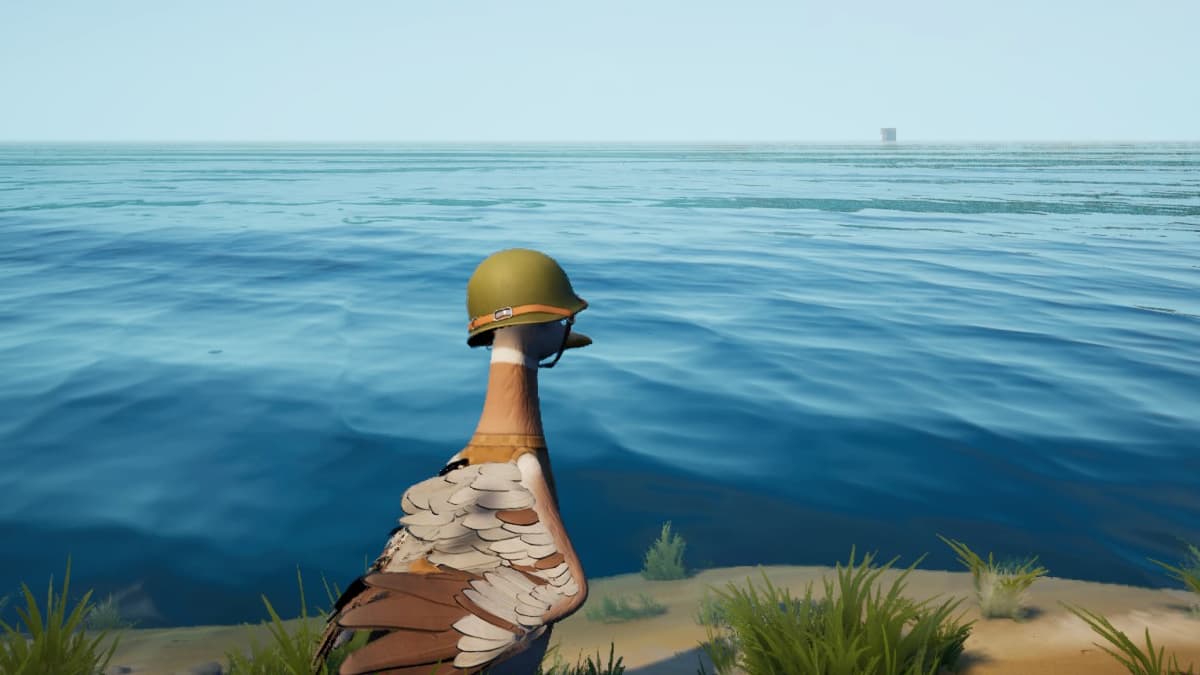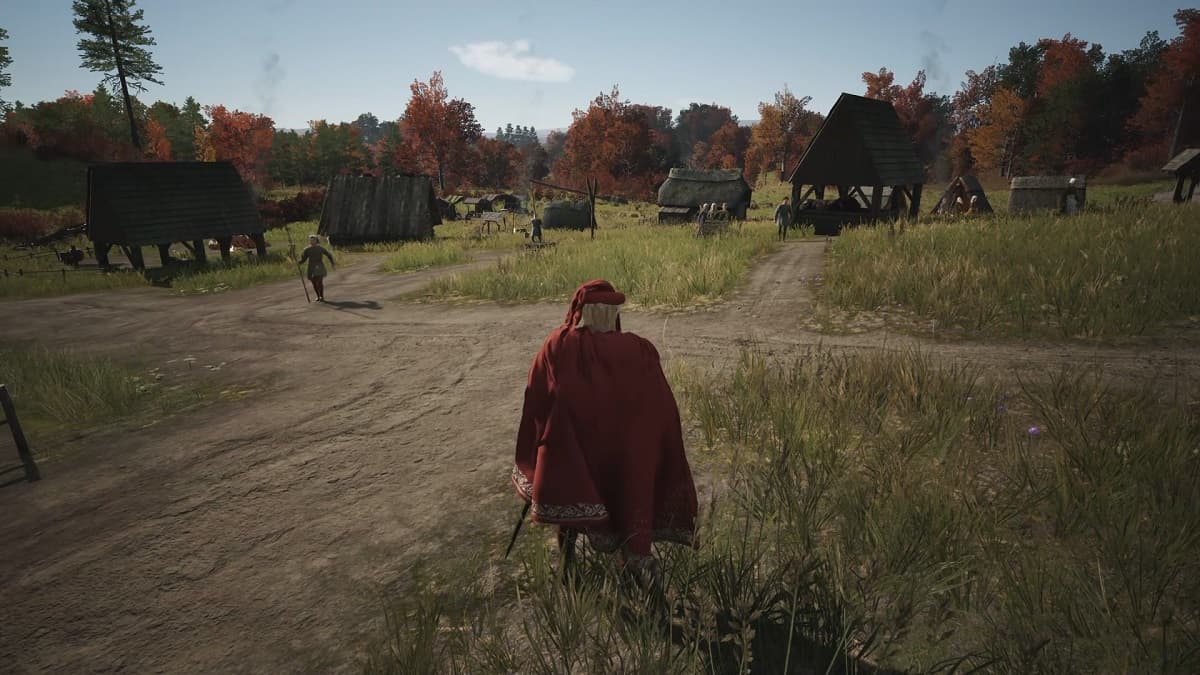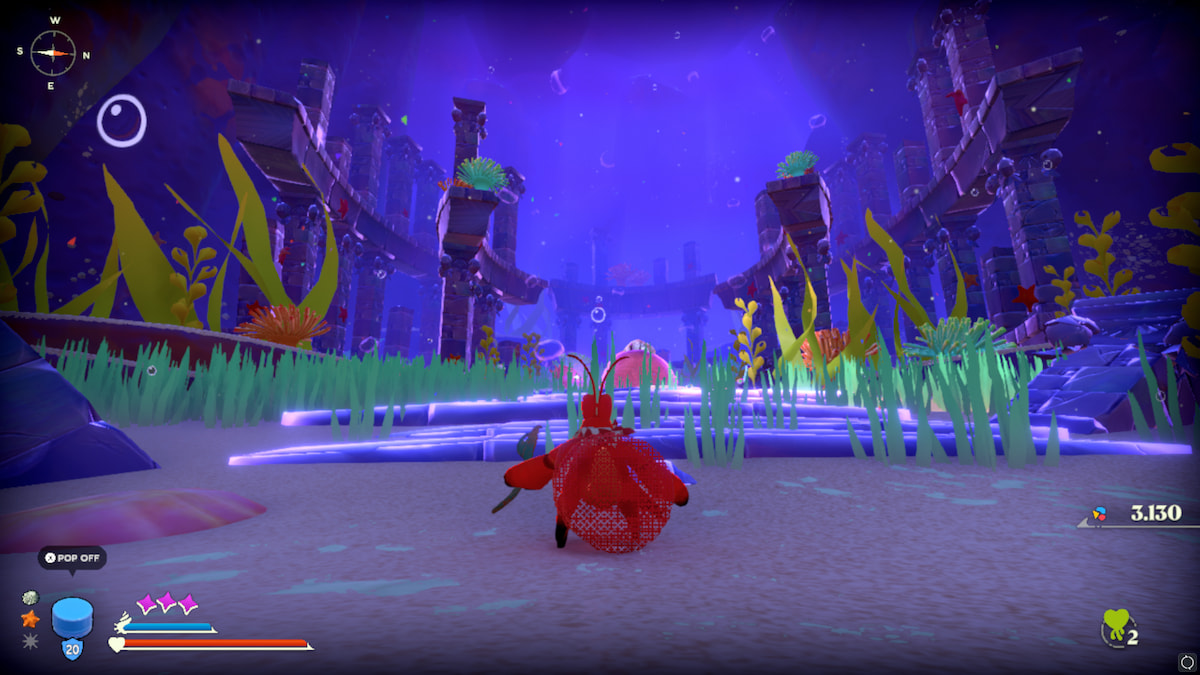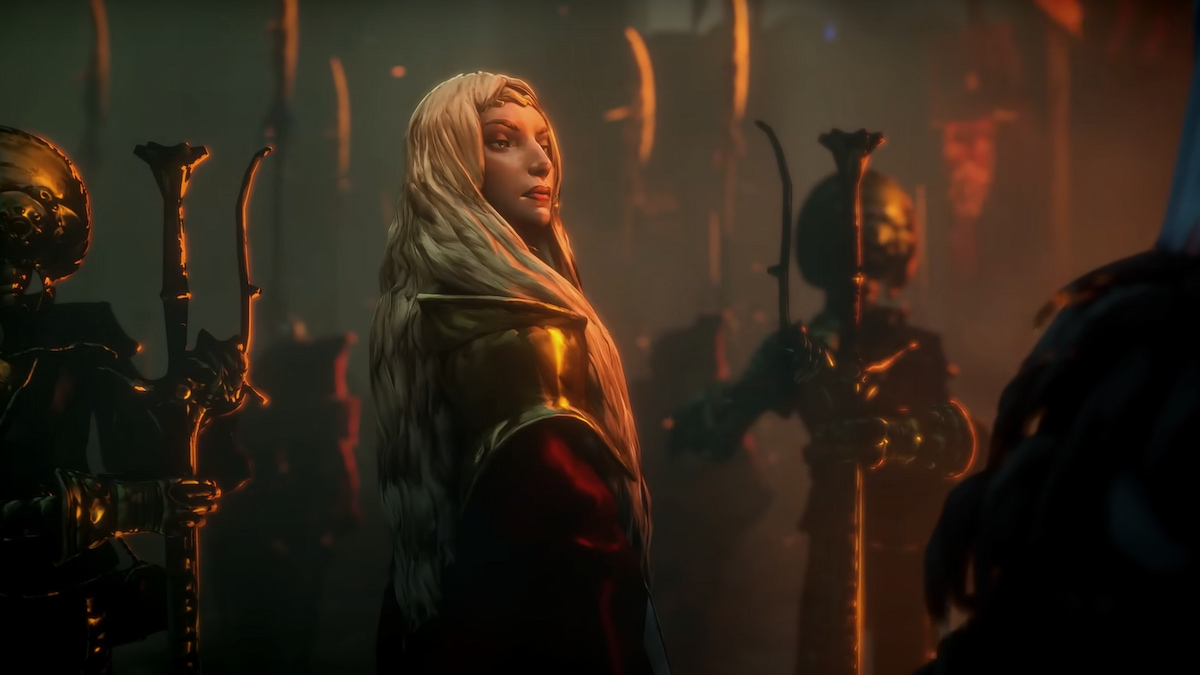Mario has always been something of a jack-of-all-trades. Purportedly a plumber, we never actually see him at work, despite the vast number of pipes he’s crawled through over the years. Instead we catch him trying his hand at kart-racing, golfing, dancing, and, oddly enough, participating in the Olympic Games with long-time rival Sonic the Hedgehog.

Why Mario even bothers in a trackrace with Sonic is beyond me; there’s really no contest here.
But despite the wide, and often bizarre, array of activities that our favourite portly Goomba-boppin’ Italian has participated in, when you actually sit down for a moment and look at it critically, quite a few of the poor guy’s endeavours have failed to hit the mark. While Mario Kart is pure, unadulterated fun, arguably even moreso with the advent of the 8th installment – which, to my knowledge, still isn’t getting the attention it deserves, possibly owing to the fact that the Wii U is a niche console few people own, but I digress – the Mario Parties have always been a mixed bag. The earlier titles for the N64 were pretty decent, blister-inducing minigames aside, but the more recent installments for the Wii have been generic, mundane wagglefests that besmirch Mario’s good name. Oh, and one of them featured this legendary localisation cockup:

Remember this? You do now. Apparently ‘spastic’ is an offensive term in Europe. Political correctness gone mad if you ask me.
As for the rest of his roster, the various sporting titles were forgettable at best, and don’t even get me started on the Dance Dance Revolution spinoff. The less said about that the better. But despite this mixed bag, there’s always been one genre of gaming that the little red-capped leakfixer has consistently excelled at: the RPG, or role-playing-game for the uninitiated.
A Long and Storied History
Starting with the frankly awesome Legend of the Seven Stars for the SNES, a milestone title that showed these characters could function believably in a turn-based environment, we were quickly treated to several more in its stead, most notably Paper Mario for the N64, released in 2001, which was sadly the tail-end of the N64’s lifespan, so few played it, which was a shame, as it was friggin’ amazing.
Come on, take a look at this boxart. It just screams fun.
Though it was supposedly a successor to Legend of the Seven Stars, you really couldn’t tell; it took what made that game great, removed what didn’t, and married it to a gorgeous, papery cut-out, storybook style aesthetic to produce a genuinely entertaining experience all its own, making it a real good swansong for the poor old N64.
In 2004, with the emergence of everyone’s favourite Fisher-Price style console the Gamecube, we got a sequel: The Thousand Year Door. This one was arguably even better, adding a far more sophisticated battle system and a genuinely dark story, in which Peach is possessed by a 1000-year-old demon bent on total cataclysmic destruction, which made for a nice breath of fresh air after Mario Sunshine‘s sickeningly twee Isle Delfino. Again, an amazing title, and one of the best for the GCN.
It’s pretty clear Miyamoto himself took over boxart duty between these two.
But then, sadly, a step backwards was taken in 2007 with the Wii installment Super Paper Mario. Originally slated for a Gamecube release, it was ported to the Wii at the last minute, and if its title wasn’t indication enough, it was pretty different, and not in a good way. It stripped away the turn-based combat in favour of a more conventional head-bopping battle system, more akin to a regular Mario platformer than an RPG, and reduced the overall feel of the title into something resembling a generic action game rather than the great TTYD.
Even so, it just about managed to scrape by as an enjoyable title with a genuinely witty, laugh-out-loud script – a highlight was a corrupt robotic dragon who spoke in computer terms, telling you, for example, to “press CTRL ALT DEL” to defeat him, then laughing at your expense upon your stark realisation the Wiimote features none of those buttons – an awesome soundtrack, the ability to play as Bowser – which is always a plus in my book, as I adored Bowser’s Inside Story – and an even darker story than TTYD, in which an evil count, twisted by many years of separation from his long lost love who he presumed dead, decides to bring about a void which will utterly consume the entire universe. It got to a point where Mario and co. actually end up in Hell. That’s just badass.
 And he actually succeeds. Kind of a step up from Bowser just wanting a slice of cake.
And he actually succeeds. Kind of a step up from Bowser just wanting a slice of cake.
2012: The End of the World? Yep, Pretty Much
So, in 2012, we received the next installment, Sticker Star. This time for the 3DS, marking the first instance the series has been on a portable console, it promised a return to the franchises’ RPG roots, with turn-based battles making a comeback. Did it succeed? Not according to the fanbase, which ripped it a new one within hours of its release, but were they perhaps a tad harsh? Let’s take a look. About time I got round to the actual review.

Well, the cover art looks promising, at least. Wait… OH GOD NO THAT’S BOWSER JR. ISN’T IT
As you can probably imagine, it’s difficult to examine a game like Sticker Star without drawing comparisons between it and its predecessors, if not outright impossible, but even so, a good reviewer needs to keep in mind that some will be going into this with absolutely no knowledge of the series that preceded it, thus impacting their experience, so during my analysis I’ll try and bring up the other entries only when absolutely necessary.
The game opens with a pretty nicely animated cutscene which sets the stage; immediately it’s established that the game literally takes place in a storybook, finally providing some form of logical explanation behind Mario’s sudden flatness, and we’re introduced to one of the Mushroom Kingdom’s 1000 annual celebrations – OK, not really, but given the number of Mario games that hinge around some form of festival, it wouldn’t surprise me – the Sticker Fest, held once a year to herald the arrival of the Sticker Comet from the titular Sticker Star, with which all the citizens can have any wish they desire granted.
But, as is usual for a Mario adventure – notice the lack of ‘Paper’ there – Bowser shows up, crashes the party, splits the Comet into six pieces, takes one for himself and also kidnaps Peach for good measure. I’m pretty sure he’s contractually obliged to do that every time by this point.
Paper-Thin Plotline
And that’s pretty much it, as far as the plot goes. Notice something here? The previous games had awesome, often dark and gritty storylines that really enabled you to develop significant emotional attachments to the characters, and this was often part of what made them such interesting titles. In this one, however, the story is no more complex than, say, Super Mario Galaxy; heck, even that had a pretty sad subplot about Rosalina’s past, and if even a platformer can turn out a better yarn than yours, you’re doing something wrong.
Pictured: a game with more narrative complexity than an RPG.
Given the past history of the series, this is actually pretty unacceptable. Now, I can understand that concessions had to be made as it’s a handheld game, and therefore angled more toward casual gamers. That’s fine. But, rather than having absolutely no story whatsoever, Intelligent Systems could have at least tried to give us more of a framing device. Heck, to even call it a framing device would be a stretch, as the only times the story is actually relevant are at the beginning and end; throughout the bulk of the game, it’s never really brought up.
Now, I’m not saying that the story has to be epic, dark, and grand in its scope. Far from it. In fact, I believe that a videogame’s plot just has to be servicable at minimum, as long as the gameplay makes up for it; however, to even get to that point, there has to be a story to begin with, which Sticker Star is sadly inadequate at providing. Even if the gameplay was absolutely brilliant – which it isn’t, as I’ll be getting to shortly – the absence of a meaningful yarn would still be noticeable.
Not dissimilarly, there aren’t really any characters here for you to develop a bond with. All – and I mean all – the NPCs are unnamed, generic Toads, whose only notable personality traits are the different colours of spots on their heads. Party members have been nixed, and replaced with a silver crown… thing named Kersti (geddit?) who’s pretty much the only original character here. She pretty much acts as your guide for the entire game – I use the term ‘guide’ loosely – meaning you never meet any other helpers, which, by extension, makes for a loooong time in her company.
Hey, Listen!
This wouldn’t be so bad if Kersti wasn’t the single most annoying helper character in recent years. Her primary ‘quirk’ is that she’s a self-entitled brat – in fact, the first thing she does upon meeting Mario is to accuse him of breaking the Comet – which, as you can imagine, doesn’t make for a very pleasant experience. Throughout the adventure, she’s unnecessarily sarcastic and spiteful, frequently insults Mario and other characters, and acts utterly indignant when you’re unable to solve a puzzle or defeat a boss.

This is one such boss. You can’t tell from the image, but ingame it’s absolutely massive. I’d like to see her try and go up against this thing.
I honestly don’t know what they were thinking when they wrote her lines; were they honestly trying to make a character more irritating than Navi? For years it seemed impossible, but they sure have succeeded here. In fact, I 100% guarantee you that by the end of the game, when she finally leaves – and I’m not even going to mark that as a spoiler, since it gives me such great pleasure to type it – you’ll be wanting to passionately kiss your 3DS screen in sheer elation. I have truly never seen a character so despicably unlikeable in any Mario game before this one. In fact, I knocked a whole two stars off the rating just because of her. I bet you feel mighty silly right now, eh, localisation team?
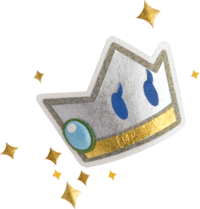
Don’t be fooled by her cute, sparkly demeanour. She has a heart of stone.
But all this could be partially – and I mean partially – forgiven if the actual gameplay was any good. Sadly, Sticker Star fails spectacularly in this regard too. The main hook of the game is that everything hinges on the use of collectable stickers; indeed, in this reality the Mushroom Kingdom is so obsessed with the shiny, glittery things that their capital is literally named Decalburg. Mario requires stickers to do pretty much everything here: jump, swing his hammer, eat Mushrooms, breathe, sleep – OK, maybe not those last two – to the point where the supposed return to an RPG-style turn-based battle system becomes more of an extended exercise in inventory management.
A Sticky Situation
Each sticker represents a single-use attack that can be used in battle, and once you’ve performed the attack, it’s gone, and more must be either purchased from Decalburg’s shop or peeled off the cardboard scenery. This concept definitely had a lot of potential; in an ideal world, the system would be that you’d be encouraged to try lots of different stickers, and you wouldn’t need to use one every single time you wanted to attack. But we don’t live in an ideal world. Allow me to elaborate.

The screen you’ll be seeing most of in the game. Sadly, it’s also the most pointless.
The issues with the combat system ultimately boil down to two very significant problems: one, since each sticker can only be used once, once you exhaust your collection you’re left with no choice but to run. But since whether or not you’re able to flee battle successfully is totally randomised – and can’t be done at all against bosses – you’ll frequently have Mario’s sizeable butt handed to him on a silver platter just because your inventory’s empty. The result is that this isn’t a turn-based RPG – it becomes an item-based RPG. Imagine a Final Fantasy game where you couldn’t attack unless your bag was full of healing items. T’would get pretty irritating, no? Much the same feeling ends up being evoked here.
What’s more is that some of the choices for sticker attacks are beyond ridiculous. A special sticker is required for a Fire Flower attack that rains fireballs on the enemies, fine. But you need to stock up on little adhesive boot icons to even perform a simple jump attack, which makes absolutely no sense whatsoever. Why does Mario need the power of a sticker to jump? He jumps around in the game’s overworld perfectly fine! Why does he suddenly need to burn through the game’s precious inventory space to pull off a move he’s world-renowned for being able to execute flawlessly?
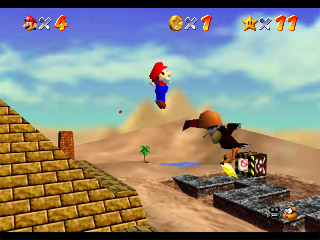
It’s like if, every time you wanted to jump in Mario 64, you had to backtrack to Peach’s castle to buy something that enabled you to do it. God, Tick Tock Clock would be hell under those conditions. Even moreso than usual.
The end result is that your album ends up being filled with hundreds of Jump and Hammer – he needs one for that too, apparently – stickers, leaving little to no room for more powerful attacks, some of which are actually pretty much required for most of the game’s bosses. Intelligent Systems really fouled up here. If you’re going to have a turn-based system, fine. But don’t make Mario utterly defenceless without inventory items. I’m pretty sure that’s, like, RPG rule #1.
Goombas Never Gave You This Much Trouble
But it gets even worse when it comes to the bosses. Aside from the fact that, in themselves, they’re pretty uninspiring – a Goomba, a Pokey, and a Blooper occupy the first three worlds respectively (although Bowser Jr, unfortunately, makes his Paper Mario debut in World 2; doesn’t Nintendo know we all hate him?!) – they’re incredibly tough, not in terms of attack power, but in defence. Now, that may not sound too bad. A challenge can be good, right? Yes, yes it can, if the challenge is executed fairly. Here, however, the general idea is that each boss has one special Sticker – or “Thing Sticker” as they’re known – that, when used against them, whittles down their HP by often up to 75%. This may seem like a secret tactic you’ve discovered by yourself at first, until the realisation rapidly dawns that they’re actually, 100%, unavoidably required if you don’t want to be totally owned by the tanklike bosses the game throws at you.
Sometimes these connections make sense; in order to beat a gigantic Cheep Cheep at one point, for example, you need a Fishhook Sticker. Fair enough. But other times the sticker you need is so erroneously nonsensical that you’re left wondering how in hell you were supposed to figure it out. For instance, the gigantic Goomba that guards World 1 will take you eons to defeat unless you use a…. Fan Sticker on him. What? Where’s the connection there? Fans and Goombas are, as far as I’m concerned, completely unrelated. Suffice to say, the tempting allure of GameFAQs will be rearing its ugly head more than once.

Need more proof? In this phase of the fight against Bowser, you need to use a stapler. Yes, a stapler. Take a look at this screenshot and tell me if you can find a single thing that suggests you need to use a stapler.
But perhaps the most irritating thing about this is that the game outright refuses to tell you what you’re supposed to use until you’ve died to the boss exactly three times, at which point Kersti will pop out, and, after berating you as usual, spell out the answer. It’s as if the developers knew you would die multiple times, and so programmed the mandatory “you’re an idiot” exposition to only play out after this. In which case, they should probably also have looked at the OP bosses and realised the issue: no game should have the condition for help be failure. Not a single one. Sticker Star considers itself an exception, apparently.
Inexperienced
Two: you no longer receive experience points for defeating enemies. You read that right. What’s that? “What point is there in battling then?” That’s a damn good question, and one to which I wish I knew the answer. Instead, every time you fell a foe, it spits out coins, and, if you’re lucky, a sticker or two. What this means is that, throughout the adventure, you’re locked in an endless, vicious cycle of meaningless combat: buy stickers to kill enemies, which give you more coins and stickers to buy more stickers and kill more enemies. So it goes on, and on, and on, with no rhyme or reason, reducing what could have been a good return to form after Super Paper Mario‘s head-bopping antics into mindless, fruitless drudgery. Since you get nothing in recompense for wasting your precious stickers on Bowser’s mooks, you can easily just bypass every battle with absolutely no repercussions on your ability in later skirmishes.
![]()
This game’s excuse for a level system. You sicken me, Intelligent Systems.
The only stat boosts Mario receives – to his health only, I might add; no power of defence upgrades for you – are by way of special cardboard hearts that litter the land, hidden in clever little nooks and crannies, which makes for an admittedly engaging sidequest, but it still doesn’t excuse the glaring problem here: by rendering the core mechanic of the game, and, indeed, of most RPGs, utterly pointless, not only have Intelligent Systems succeeded in making this the least RPG-like entry in the series thus far (which, ironically, is the exact opposite of what they were supposedly attempting to achieve) but also in making a good 85% of the game feel unrewarding, unnecessary, and synonymous with padding. I seriously never thought I’d come to associate the term ‘padding’ with the usually bareboned Mario series, but there it is.
All these issues with the battle system ultimately render all the combat except the bosses a waste of your time, leaving only the overworld – or ‘field’ if you wanna get technical – segments to make or break the game. Sadly, despite a few highlights here and there, these fare little better.
A Step Backwards

I’m getting a serious New Super Mario Bros. U vibe from this. And that isn’t a good thing.
Unlike previous entries, Sticker Star‘s world is divided up by way of a Super Mario Bros. 3 style worldmap. I actually have no qualms with this, as it provides structure to the gameworld, and it’s implemented fairly well for the most part. To be honest, you’ll spend so long in each ‘stage’ – often not for entirely the right reasons – that you’ll eventually begin to forget you’re playing a subdivided area.
What I do take offence to, however, is the theming of each world. Whereas in, say, TTYD, each chapter offered something new – one minute you’d be in a dimly lit town where everyone kept turning into pigs, then the next you’d be in a wrestling tournament under the pseudonym Gonzales – here the six worlds are the classic Mario fare. Say it with me: grass world, desert world, forest world, ice world, fire world, Bowser’s castle. That’s exactly the structure the game follows, and it creates the impression that they were not only trying to move forward by bringing back the RPG elements, but also move backwards by making it more like a traditional Mario game.
You can’t have it both ways, Intelligent Systems. The excuse of it being on a handheld can’t be used here. If people want a gameworld like that on the 3DS, they can push off and go buy the decidedly subpar New Super Mario Bros. 2. This is Paper Mario we’re talking about, and the series deserves better than this generic tat. I’m sorry, I’m just really passionate about this.
This Reminds Me of a Puzzle. A Real Frustrating One
Anyway, if you can bring yourself agonisingly to look beyond this, you’ll find the actual stages aren’t great either. The general gist of each is to find the piece of the Comet that marks the end, and to get there you solve some puzzles – I’m hesitant to say you kill enemies as, again, it’s utterly pointless – and do some regular platforming. This is pretty much what every level boils down to, aside from a few highlights that include a Snifit gameshow, a ski-lift siege, and the Enigmansion, a Luigi’s Mansion-style ghostbusting romp that is genuinely entertaining.

This part made me wish I was playing Dark Moon instead. Sadly, it was not to be.
But these gems are sadly few and far between. Most stages are generic, boring, and whenever they do offer puzzles, they are so mind-bendingly frustrating that your 3DS will be lucky if it comes out unscathed. Ironically, the main problem with the puzzles is the same as the main problem with the battles: the Thing Stickers. In case you didn’t figure it out, Thing Stickers are essentially real-world items turned into little adhesive icons – like a vacuum cleaner or a rubber duck, for instance – that, when applied to the landscape, summon a gigantic rendition of the object they represent. Again, some of these make sense, like using a gigantic fan to blow the sails of a windmill around, or using a faucet to fill up a lake. That’s all fine and dandy. But, much like the battles, some are just absurd.
There’s a part where you’re presented with a gigantic plug socket in the middle of a sandstorm. That’s it. No indication is given as to what to put in there, and as there are a great deal of electrical appliance Things in the game, you could conceivably be there for hours plugging in various Things before you find the solution, which turns out to be a vacuum cleaner. For some reason. Sure, why not? What’s worse is that, in order to generate the Thing Stickers, you need to find the original item in the world, and, again, no hint is given as to where you may find them, leading to endless hours of backtracking looking for, say, a paperclip that could be literally anywhere, behind any door, in any stage, in any world.
It’s clear some attempt was made to curb the frustration with Kersti – oh no – who, upon a tap of the L trigger, will pop out and offer some ‘advice’, which is typically some utterly useless, indecipherable garbage that, more often than not, is completely unrelated to the task at hand. In the aforementioned scenario, for example, her ‘advice’ is: “Wow, this sand is really irritating my eyes!” before vanishing again. Look, Intelligent Systems. If you’re going to have a hint system, you need to make the hints helpful, otherwise it’s just another excuse to have Kersti blather on at you, and Lord knows we didn’t need another one.

The scenario in question. Heck, even I can write better hints than Intelligent Systems can: “Wow, this sand sure sucks… hey, sucks! That’s it!”
And when the puzzles aren’t making you chew your own arm off, they’re insultingly easy. There’s no happy medium. Through use of a ‘Paperisation’ technique, you can rip off parts of the world and manipulate them. This had some potential: imagine a puzzle, for instance, where a Whomp guards a bridge. You could Paperise the bridge, flip it over, and watch the Whomp plummet to his doom. See, that would be clever. But most of the puzzles that utilise this mechanic boil down to simply placing something you rip out into a clearly designated purple area. Hardly Mensa-style stuff.
The Good Stuff
In terms of the game’s graphics, they’re… actually not half bad. What a shocker. This takes the first three games’ papery aesthetic and ratchets it up to 11, to the point where even flowing water is made of paper, and the clouds are suspended in the sky by strings. Even the relatively lighthearted N64 original didn’t have cartoon physics this skewed, and, to the game’s credit, it works. The 3D effect, however, is the typical negligible ‘depth of field’ shtick that’s barely noticeable, so have it off for the sake of your poor 3DS’s battery life. Am I the only one who, upon hearing ‘3D’, thinks of things popping out, rather than in? It’s a concept Nintendo seems to have failed to grasp.
The soundtrack, however, is absolutely awesome, and – dare I say it – may be the best of the series so far. Highlights include the title theme, the Decalburg theme and the track ‘Kersti’s Power‘ which is a rockin’ blend of the main theme and classic Mario tunes from the likes of Super Mario World. In fact, the music is so friggin’ good that it accounts for one of the stars of my rating, and given that that’s 25% of the rating, it says a lot.
Don’t believe me? Go on, have a listen. That’s some good stuff right there.
However, you may notice that the only positive things I have to say about this stinker are purely aesthetic in nature, and good looks can only carry you so far – a fact which several Kinect games can attest to, but I digress. It’s always been my belief that unless a game is fun to play and has memorable characters, as well as mechanics that are actually functional, you may as well be looking at an HD screenshot of it, as the only enjoyment you’ll be deriving will be from its graphics, which often isn’t worth the steep entry price for most games these days.
Sadly, aside from these pleasant visual and audio surprises, Sticker Star is an utterly disappointing entry in the series in pretty much every way possible. Throw in a genuinely unlikeable character who’s with you all the way through, insurmountable bosses that demand a nigh-unfindable item, a dysfunctional battle system that completely eliminates the point of its own existence, brain-melting puzzles and absolutely no story whatsoever, and you’ve got yourself a recipe for disaster.
Garnish with $39.99, serves one very unlucky individual.
FINAL VERDICT
Story: 0/10
Graphics: 8/10
Performance: 5/10
Presentation: 2/10
Controls: 5/10
Audio: 9/10
Lasting Appeal: 3/10
OVERALL: 4/10





